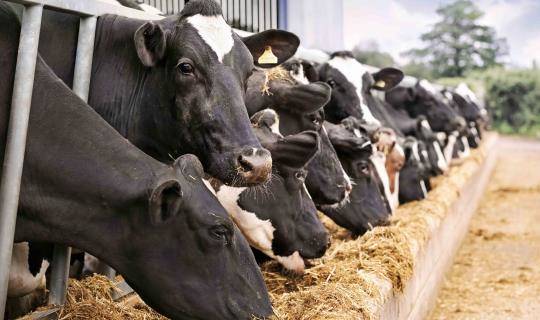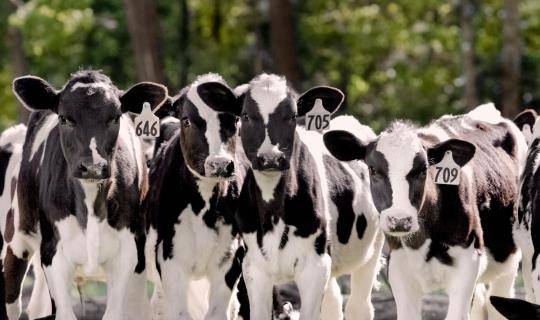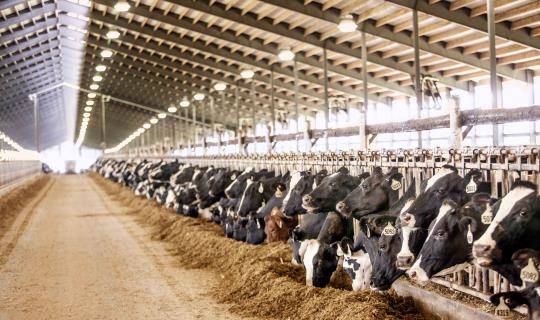Cleverly combating insecticide resistance
By Mike Catangui, Ph. D

Fly infestations are one of the most persistent challenges in modern dairy operations. Beyond being a nuisance, flies—especially stable flies and house flies—can significantly impact both animal welfare and your bottom line. Painful bites from stable flies can reduce milk production by ten to twenty percent as cows waste energy stomping, switching tails, and bunching together, which exacerbates heat stress. Additionally, these pests can spread bacterial parasites and cause irregular feeding patterns leading to digestive issues.
Unfortunately, many dairy operations are finding that their traditional fly control methods are becoming less effective due to insecticide resistance. This article presents three proven strategies to overcome resistance issues while maintaining effective fly control for healthier herds and improved production efficiency.
Strategy 1: Test before you treat
One of the most significant advancements in modern fly control is the ability to test fly populations for resistance before choosing treatment options. This approach eliminates guesswork and prevents wasting resources on ineffective products.
Real-time resistance testing
MWI Animal Health's Entomology Laboratory in Sioux Falls, South Dakota, specializes in quick-knockdown testing for insecticide resistance of flies currently occurring on the dairy farm. Here's how it works:
- Flies are collected from your specific dairy operation.
- The flies are exposed to various insecticide products in controlled laboratory conditions.
- Scientists monitor how quickly the flies are affected (or if they're affected at all).
- Results determine which products will be most effective against your specific fly population.
This customized approach ensures that your fly control program uses only products that will be effective against your particular fly population. This not only improves control but also helps prevent further resistance development by avoiding repeated exposure to ineffective chemicals.
Strategy 2: Embracing natural insecticides
Natural insecticides, particularly those derived from pyrethrum plants, offer several advantages in the battle against resistant flies.
Why natural pyrethrins excel
Natural pyrethrins present an ideal solution for dairy operations because they:
- Kill flies quickly and efficiently
- Face no resistance issues even after over 1,000 years of use
- Come from sustainable plant origins
- Can be used directly on animals with appropriate formulations
- Leave no residues in milk or meat
- Can be applied as frequently as necessary on both animals and in the surrounding environment
Natural pyrethrins contain six active insecticidal compounds (esters) that work together to provide effective control. Unlike synthetic pyrethroids (such as permethrin), which are lab-synthesized versions of a single pyrethrin compound, natural pyrethrins offer a complex mixture that makes resistance development extremely difficult for fly populations.
Available pyrethrin formulations
Several formulations are available for dairy operations:
- Organic natural pyrethrins (1 unique product) - for certified ORGANIC operations
- Water-based natural pyrethrins (6 unique products) - BETTER option with good efficacy
- Oil-based natural pyrethrins (4 unique products) - BEST option for maximum effectiveness
Strategy 3: Employing diverse products and application methods
The third strategy focuses on using a variety of products, formulations, and application equipment to create a comprehensive fly control program that targets flies at every life stage.
Product diversity
We offer over 100 different fly control products available for dairy cattle including on-animal sprays, traps, misting systems, and much more, creating an integrated approach is both possible and recommended.
Application methods comparison
| Method | Benefits | Best for |
|---|---|---|
| Mist spraying | Covers large areas quickly, good penetration in barns | Whole-herd treatment, barn treatments |
| Fogging | Reaches difficult areas, good for enclosed spaces | Calf hutches, smaller enclosed areas |
| Solid bait application | Targeted control of house flies, minimal drift | Around feed areas, walkways (away from feed) |
| Direct animal application | Precise application, good for spot treatments | Individual animal treatment, smaller herds |
Life cycle targeting approach
For maximum effectiveness, target flies at every life stage:
For adult stable flies:
- [GOOD] Water-based synergized permethrins
- [BETTER] Water-based natural pyrethrins
- [BEST] Oil-based natural pyrethrins
For fly larvae:
- [GOOD] Feedthrough larvicide
- [BETTER] Water-based sprayable larvicide
- [BEST] Oil-based sprayable larvicide
Economic benefits of effective fly control
The return on investment for proper fly control is substantial. We can calculate the ROI for controlling stable flies in a dairy herd.


Recommendations
Implementing these three strategies—testing before treating, using natural insecticides, and employing diverse control methods—creates a comprehensive approach to fly management that effectively counters insecticide resistance while improving animal welfare and dairy productivity.
To maximize the benefits of these strategies:
- Begin with resistance testing to determine which products will be most effective for your specific operation.
- Incorporate natural pyrethrins into your fly control program, particularly oil-based formulations.
- Target flies at multiple life stages using various products and application methods.
- Track your results by monitoring fly populations and animal behavior.
By taking a scientific, integrated approach to fly control, dairy operations can overcome insecticide resistance issues while simultaneously improving animal welfare and operational efficiency.





